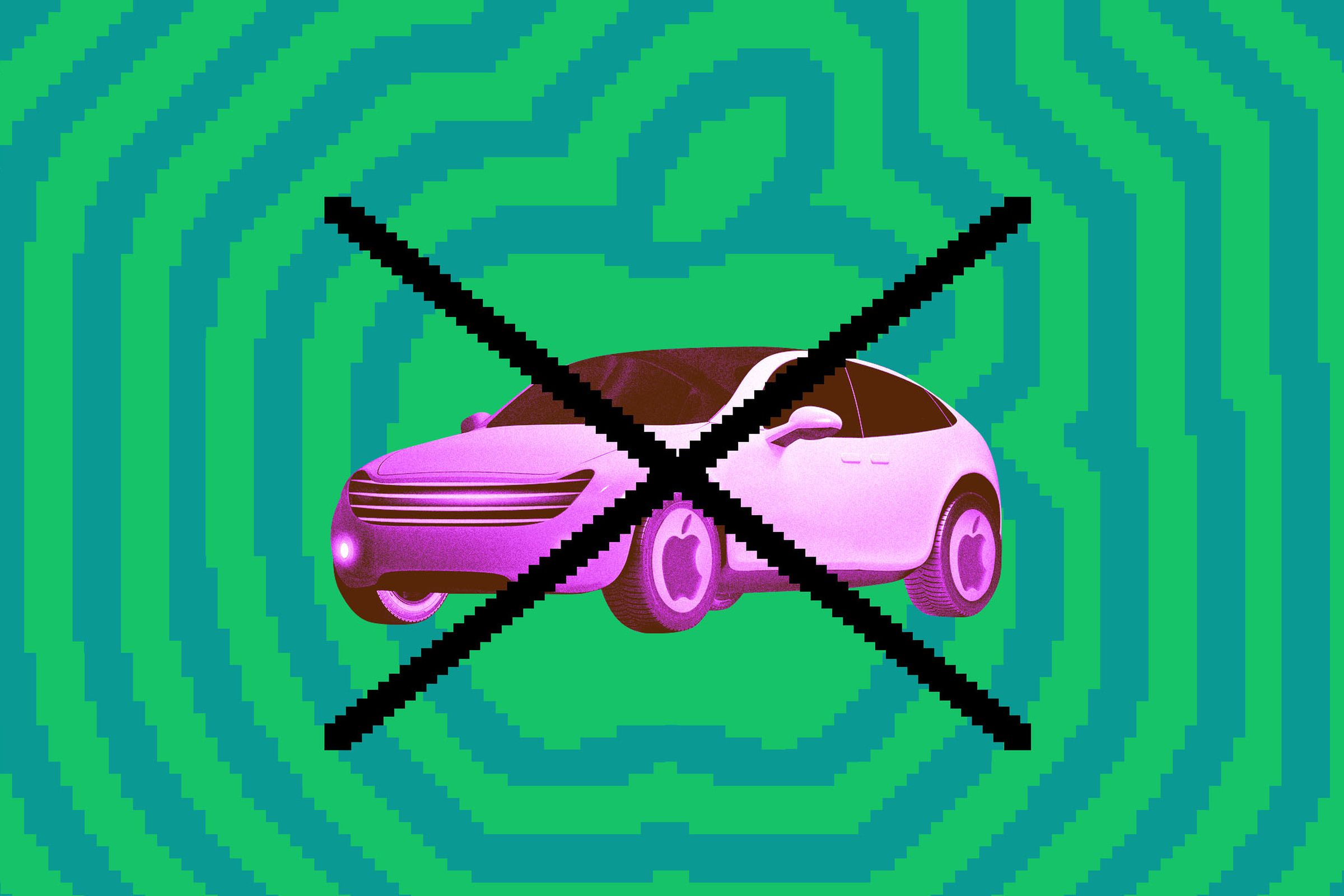In 2017, Apple CEO Tim Cook confirmed what the global auto industry had long feared: the tech giant was working on a driverless car.
“We’re focusing on autonomous systems. And clearly, one purpose of autonomous systems are self-driving cars,” Cook said in an interview with Bloomberg. “And we sort of see it as the mother of all AI projects. It’s probably one of the most difficult AI projects actually to work on and so autonomy is something that’s incredibly exciting for us, but we’ll see where it takes us.”
Where it took Apple was essentially nowhere. On Tuesday, Bloomberg’s Mark Gurman confirmed that Apple was scuttling its secretive car project, with most of the team’s workers moving over to generative AI initiatives. Others would likely be laid off. Presumedly the car would be mothballed alongside other never-to-be products like the Apple TV and the Paladin.
“We sort of see it as the mother of all AI projects.”
Nearly a decade after first launching Project Titan, Apple is back where it started. It remains a nebulous, mysterious object to the bitter end, never really ever taking shape beyond the rough, embarrassed imaginings of the company’s most devoted fan base. And while it seems to have been a mostly wasted effort, the decision to pull the plug is being celebrated by potential competitors and, most of all, investors.
Wall Street was always skeptical of Apple’s vehicular dalliances, viewing it as an expensive distraction with more pitfalls than positives. Wedbush’s Dan Ives congratulated Apple for “ripping the band-aid off,” arguing it was “clearly the right move for Cook & Co. moving forward.” Morgan Stanley’s analysts praised the company for “focusing on what matters” and “exhibiting cost discipline.”
It remains a nebulous, mysterious object to the bitter end
The implication isn’t that an Apple car wouldn’t matter in the grand scheme of things, but just that the company was better off focusing on more buzzworthy projects more in its wheelhouse, like AI.
It’s not a surprise that the demise of the Apple car coincides with a bleaker outlook for electric and autonomous vehicles. After years of promising that battery-powered, driverless vehicles would soon dominate personal transportation, the industry is going through serious growing pains. Investments are being reined in, factories put on pause, and model lineups canceled. Pure EV plays like Rivian and Lucid, companies that are exclusively making plug-in vehicles, are struggling to find customers as most people are looking for something more affordable — or hedging their bets with a hybrid.
If Apple were to suddenly parachute onto this stage, the tech giant would likely confront similar headwinds, said Sam Abuelsamid, principal analyst at Guidehouse Insights.
“Affordability is an increasing problem and since Apple isn’t going to want to sell an entry level EV, that leaves them with an increasingly tight premium market,” he said. “If Lucid and Rivian can’t find a way to sell expensive EVs with products as good as they have, it’s going to be tough for another newcomer like Apple.”
A fully autonomous vehicle would have been just as difficult, if not more so. Just look at the increasingly fraught adventures of the various robotaxi companies in California, where cars are crashing into pedestrians, buses, and bicyclists with increasing frequency. Apple, always incredibly image conscious, would do best to avoid similar headlines.
It’s not a surprise that the demise of the Apple car coincides with a bleaker outlook for electric and autonomous vehicles
To be sure, developing a suite of hardware and software needed to enable a car to drive itself always seemed more aligned with Apple’s capabilities than building a whole damn car from scratch. And the company clearly made some progress there, operating a modest-sized fleet of vehicles in California and even releasing a hilariously sparse, seven-page safety report to federal regulators.
But Apple never really caught up to its rivals, who had been working on this problem longer and with more resources to spend. It never obtained a permit from California regulators to operate its vehicles without safety drivers in the front seat. And the size of the company’s fleet stayed relatively flat. But Apple stuck to it. Last year, the company bested Waymo and Cruise in the rate of increase of miles traveled by its autonomous vehicles, The Washington Post reported.
Sure, Apple can retrofit several dozen cars with sensors and software, and make them drive themselves. A lot of companies can do that. Over three dozen companies have self-driving cars on the road in California. It’s not too hard to find a bunch of Toyota Highlanders and stick some cameras and lidar on them.
Apple never really caught up to its rivals
But it’s the next step, and the step after that, that proved too daunting. Given the company’s control freakiness, the only way Apple could make this work was likely as a closed robotaxi ecosystem, perhaps as a monthly subscription service. But that’s a business model that’s yet to be proven. Even Elon Musk can’t seem to make the math — or technology — work.
None of its rumored deals ever panned out. It was going to partner with BMW. No wait, it’s Volkswagen. Ah, actually how about Hyundai? Or Nissan? When none of the established automakers would sign up to build Apple’s car, it decided to pivot to software. It bought Drive.AI just days before the startup would have run out of cash, acquiring the small company’s small team of AV engineers. And it could never decide who exactly should be in charge of this whole operation.
Finally, in January, the top executives gave Project Titan a mandate: put up or shut up. Bloomberg reported that self-driving cars were out, and Level 2+ ADAS — think Tesla’s Full Self-Driving or GM’s Super Cruise — was in. The launch date was pushed to 2028.
Only it wasn’t. Weeks later, the plug was pulled. The Apple car was toast. We’ll never know what we missed.

Leave a Reply